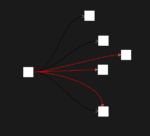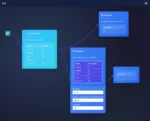In today’s hyper-connected digital landscape, every piece of data tells a story—but what about the story behind your data? Context-aware data processing, driven by environmental metadata, gives businesses the power to transform raw data points into meaningful, actionable insights. By understanding the circumstances, location, and conditions in which data is generated and utilized, organizations can unlock far greater potential from their analytics initiatives. At our software consulting consultancy, we recognize the strategic value of leveraging environmental metadata to enhance decision-making capabilities. In this guide, we unpack how context-aware data processing can redefine the future of your data-driven strategies, offering clarity and competitive advantage in an increasingly complex technological ecosystem.
Understanding Context-Aware Data Processing: Beyond Raw Data
Businesses often have vast amounts of raw data stored across various platforms, yet many struggle to interpret or leverage this information meaningfully. Traditional data processing involves cleaning, structuring, and aggregating—but often overlooks critical environmental metadata. Environmental metadata refers to contextual information around data generation, like device details, network properties, geographic location, or operational context. Context-aware data processing integrates these environmental factors into analytical frameworks, enriching insights and enabling competitive strategies. For instance, knowing the exact geographic context your customers access your digital solutions from may drastically alter your marketing deployment or functionality decisions. To better understand processing methods and architectural choices involved, read our detailed article about isomorphic data processing, which explains logic consistency across environments.
By capturing and utilizing environmental metadata, enterprises move beyond a one-dimensional approach, diving deeper into nuanced analytics and more precise decision-making processes. This alignment between environmental metadata and strategic analytics provides insights that can drastically reduce inefficiencies. In fact, we have experienced firsthand how companies in burgeoning tech hubs are enhancing efficiencies; we share some specific practical applications in our study of Austin-based companies using advanced data analytics. Context-awareness positions your business to anticipate changes rather than merely react to them, positioning you strongly ahead of competitors not leveraging environmental metadata.
The Benefits of Leveraging Environmental Metadata in Data Processing
Enabling Enhanced Real-Time Decision Making
Context-aware data processing is particularly significant in situations requiring rapid decision-making. Integrating environmental metadata, such as real-time geolocation or user device context, enables immediate analytics-driven responses. Imagine an eCommerce retailer adjusting targeted promotions dynamically by interpreting customer location metadata or driving real-time advertising based on geographic traffic data. This immediate responsiveness grants a direct competitive advantage, enabling businesses to seize market opportunities as soon as they emerge.
A sophisticated and optimized ETL (extract-transform-load) pipeline is essential to maintain these real-time processing requirements. For practical strategies in improving ETL performance, review our comprehensive guide to improving your ETL processes. By mastering these critical techniques, your context-aware data processing workflows can achieve lower latency, reduced response time, and increased reliability.
Ensuring Data Consistency through Contextual Integrity
Consistency and data reliability are hallmarks of successful analytics projects. Including environmental metadata can guarantee the integrity and provenance of critical business intelligence. Contextual data processing ensures accuracy by delivering clear documentation of context, traceability, and immutable audit trails. We discussed the relevance and implementation of these secure, immutable strategies in our recent exploration of immutable data architectures. Understanding environmental metadata alongside immutable frameworks offers decision-makers the confidence that their critical analytics reports depicted the actual environment of data origins and transformations.
Implementing Context-Aware Data Processing: Practical Steps
Establishing Thorough and Consistent Metadata Capture
The initial step towards building a context-aware data processing pipeline revolves around designing thorough, standardized procedures for metadata capture. Organizations must identify all critical environmental context aspects relevant to their analytical needs. Detailing explicitly how and where environmental metadata will be gathered, stored, and governed is critical. This metadata can range from simple details like timestamps or equipment information in manufacturing plants, device configuration details in software analytics, or network attributes within IT operations.
To ensure accurate metadata collection, teams must establish clear standards, training, and database designs, governed by enforced access controls. Understanding the principles of proper database governance and access privileges is fundamental; we share best practices in our guide to granting privileges and permissions in SQL. Investing resources upfront in metadata accuracy and consistency provides tremendous clarity, reducing long-term complexity and simplifying future analytical efforts.
Embedding Context Metadata in Your Data Models
Once environmental metadata has been consistently collected and structured, embedding it directly into your analytics pipeline, data models, and business intelligence solutions becomes crucial. Embedding metadata simplifies data discovery and unlocks exploratory analytics previously unachievable by traditional keyword-driven reporting. With modern business intelligence tools like Microsoft Power BI, analyzing and visualizing these advanced metadata insights can transform your analytics outcomes. Partnering with specialized consultants can significantly streamline your embedding process; explore our expert services through our dedicated Power BI consulting services.
By enriching data models with contextual intelligence, semantic embeddings can significantly improve your organization’s analytics capabilities beyond simple keyword matches. For strategic detail on leveraging these techniques, read our specialized article on semantic embeddings for business intelligence. Context-enriched data models deliver strategic differentiation, heightened analytical capabilities, and stronger decision-making frameworks.
The Role of Human-Centered Design in Context-Aware Data Analytics
While technology integration and data architecture are critical elements, organizations must retain a human-centric orientation that prioritizes user experience and practical application. Effective deployment of context-aware analytics solutions involves incorporating environmental metadata specifically to enhance the usability and accessibility of data products for stakeholders. Our team firmly believes the analytical experience must be built around the humans interacting with it—not around databases or algorithms alone. For a comprehensive review, read more about our position on human-centered design in data analytics.
User interaction context—such as platform preference, like choosing between Mac vs Windows for JavaScript development—also significantly impacts analytics product adoption and performance. Understanding environmental context factors plays a guiding role in holistic solution designs that gracefully meet human expectations and business requirements. Aligning your context-aware analytics frameworks directly with the strategic priorities and user preferences involved will ensure superior outcomes and adoption rates.
Bringing Context-Aware Data Analytics Solutions into Production
Successfully delivering context-aware analytics solutions requires a validated data strategy, robust architecture planning, and user-centered designs. Our consultancy leverages agile methodologies coupled with advanced development and BI capabilities to accelerate production deployment. One recent demonstration of context-driven analytics deployment is our available template, the Colibri Google Analytics Tableau dashboard, incorporating contextual website metrics into instantly actionable analytics.
Implementation strategies should also prioritize foundational skills like mastering SQL basics. Check out our introductory tutorial, Getting started with SELECT statements in SQL, ensuring optimal querying performance and cross-platform context-awareness. With thorough documentation and efficient cross-team collaboration, your context-aware data analytics initiatives can become achievable, actionable, and ultimately transformational for your organization.
Unlock Business Potential with Your Contextual Advantage
Incorporating environmental metadata meaningfully within your data analytics process is far from an innovation luxury—it’s an essential strategy for differentiation and competitive agility. Adopting context-aware data strategies not only enriches reporting accuracy but fundamentally reshapes decision-making abilities. As environmental factors continue becoming critical data points, organizations adopting a context-led strategy are destined for improved efficiency, better insights, and transformative outcomes. Are you prepared to fully embrace context-aware data innovation? The power of context is waiting—unlock it today.

























